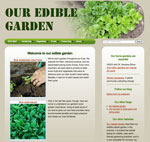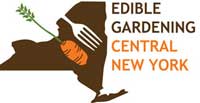On wild turkeys
by Sara Stein
|
 | | Pagoda dogwood fruit and buds: one of the turkey's preferred foods |
| |
America is the homeland of the wild turkey, which once was widespread and abundant from western scrub to eastern forest. Now it survives only in scattered refuges. ...
But had the turkey stood for America the Beautiful, we might have seen it as our civic duty to assure the gobbler a plentiful supply of the nuts, grains, and fruits and of the beetles, spiders, snails, and centipedes that it also likes to eat. The turkey's natural habitat is "open woodlands with scattered natural or manmade clearings." We might, if we had more humbly stuck to our own paths, have kept our wild turkeys with us, sharing the promised land.
Perhaps wild turkeys can return; perhaps they can't. But when each of us, alone and in community, on acreage and in small back yards, for reasons of ecology, economy, or style has done all that can be done to restore the abundance of the land, many other animals surely will rejoin us.
Then it will work. Then there will be plenty. Then we will have reason for thanksgiving.
~ Sara Stein, Noah's Garden, 1993, pp. 253-254
|
| Our Habitat Garden |  |
Visit Our Habitat Garden website for information on providing habitat, earth-friendly gardening practices, plants, and various creatures here in Central New York.
|
| HGCNY on Facebook |
As as more of us participate on our Facebook page, this will become a useful resource for asking (and answering!) local HGCNYers' questions about habitat gardening. |
|
Join HGCNY!
|  |
Becoming an official member of HGCNY is easy: just join Wild Ones! Basic household membership is $37/year, but there are other options, too. (See membership application or website.)
Wild Ones
P.O. Box 1274
Appleton, Wisconsin 54912-1274
Make checks payable to Wild Ones.
Or telephone toll-free 877-394-9453.
|
|
Our Edible Garden
|  | Visit OurEdibleGarden.org to see an example of a Central New York edible garden, the perfect companion to your habitat garden.
|
| Interested in Edible Gardening? | 
|
If you'd like to get information on Edible Gardening CNY, just email John to find out about edible gardening tours and monthly programs. Free and open to the public! |
|
Greetings!

Our November meeting is always a little different. Since we meet the last Sunday of the month, our meeting falls at end of the Thanksgiving weekend, so we're a little more informal. Our November meeting is a good way to wrap up the holiday! This November, we're pleased to be able to show the video Urban & Suburban Meadows, Bringing Meadowscaping to Big and Small Spaces by Catherine Zimmerman, based on the book of the same name. Those on our Board who previewed the video all enjoyed it and thought it was worthwhile. ( View the trailer...)
When: Sunday Nov. 25 at 2:00 pm Where: Liverpool Library ( Directions) Free and open to the publicJanet Allen
President, HGCNY
|
|
|
Honeybees and the first Thanksgiving
 | | Honeybee on a beach plum |
There weren't any!
Since honeybees (Apis mellifera)
aren't native to North America, the Pilgrims sat down to their first Thanksgiving without honeybees -- which means they also didn't have honey or many of the bee-pollinated foods we're used to.
Some of the foods you may be eating on Thanksgiving that depend on bees are pumpkins, squash, apples, and cranberries.
When did honeybees arrive in the New World?
The first recorded arrival of honeybees was in 1622, when hives were brought to the colony of Virginia to provide honey and candle wax. Native Americans called these unfamiliar insects "white man's fly."
Honeybees soon swarmed into the surrounding meadows and forests and extended their range beyond the colonies, finally reaching the West Coast 200 years later.
Some crops that would virtually disappear without bees: apples, almonds, blueberries, cherries, avocados, cucumbers, onions, grapefruit, oranges, and pumpkins.
Give thanks for bees on Thanksgiving.
They provide one of every three bites of our food!
|
|
We need your input on milkweed
 | | Swamp milkweed |
HGCNY and Wild Ones, as partners in the Monarch Joint Venture, will be providing milkweed plants. Why? Because without milkweeds, there will be no monarchs! Milkweeds are increasingly scarce, which is one of the big challenges monarchs face.
In order to provide milkweeds in the spring, we need to plan how many we would like to grow. Since the quantities we need are beyond what we can grow ourselves, we'll have to outsource their production.
We'll most likely be providing them in groups of six, since fewer than that in one location is not as helpful to monarchs.
We plan to provide them at our own cost or below since we're interested in getting as many milkweeds planted as possible.
OUR QUESTION: How many milkweeds would you be interested in planting? We'll probably have mostly swamp milkweeds, with some butterfly milkweed and some common milkweed. (Note: Despite its name, swamp milkweed will grow in normal soil as well as moist soil.) Please email me with your guesstimate. There's no obligation and this doesn't constitute an order or plant reservation. We simply need a ballpark idea of how many plants to order.
|
|
Featured plant: Yew
 | | Canada yew |
The Canada yew (Taxus canadensis) has berries in the summer, but birds soon gobble them up.
But even without their berries, yews help birds in winter because they, like most evergreens, provide much-needed cover from the cold, wet weather.
Yews grow in part sun or shade in normal to moist well-drained soil. They have a somewhat sprawling habit, but can be pruned and shaped any time during the growing season. They're shorter than most evergreens at 2 - 3 feet high and 3 - 10 feet wide.
Although the seeds in the berries are toxic to people and livestock, deer are immune to the toxin and, unfortunately, love to eat the plant. [Editor's note: My yew hasn't been touched by deer.]
|
|
Green among the brown
 | | Japanese honeysuckle |
Dr. Jason Fridley (a previous presenter at HGCNY) has been studying non-native invasive plants and how they function in a forest.
For three years he measured when plants leafed out in the spring, when they shed leaves in the autumn, and how much food they produced over the growing season.
Although previously it had been thought that these plants made most of their food in the spring before the canopy trees leafed out, he discovered that the invaders produced much of their food in autumn, after most native plants had lost their leaves. Fridley concluded that invaders may succeed partly because they occupy a previously empty "autumn niche" and that this is changing how our forests function. Read the whole story or listen to the Northeast Public Radio "Academic Minute." |
|
Project FeederWatch: Sketch
 | | Red-tailed hawk |
Join educators from the Museum of Life and Science in Durham, North Carolina and the Science Museum of Minnesota to practice sketching birds as a way to enhance observation and identification skills. This free, eight-week online program accommodates a range of birders and sketchers, from novice to expert, focusing especially on the novice sketcher. We'll host observational and drawing activities each week online, share our work with each other, and enjoy conversations together about our observations and about the process of learning how to draw (again) as an adult, focusing on birds in particular. For more information... |
|
|
|
|